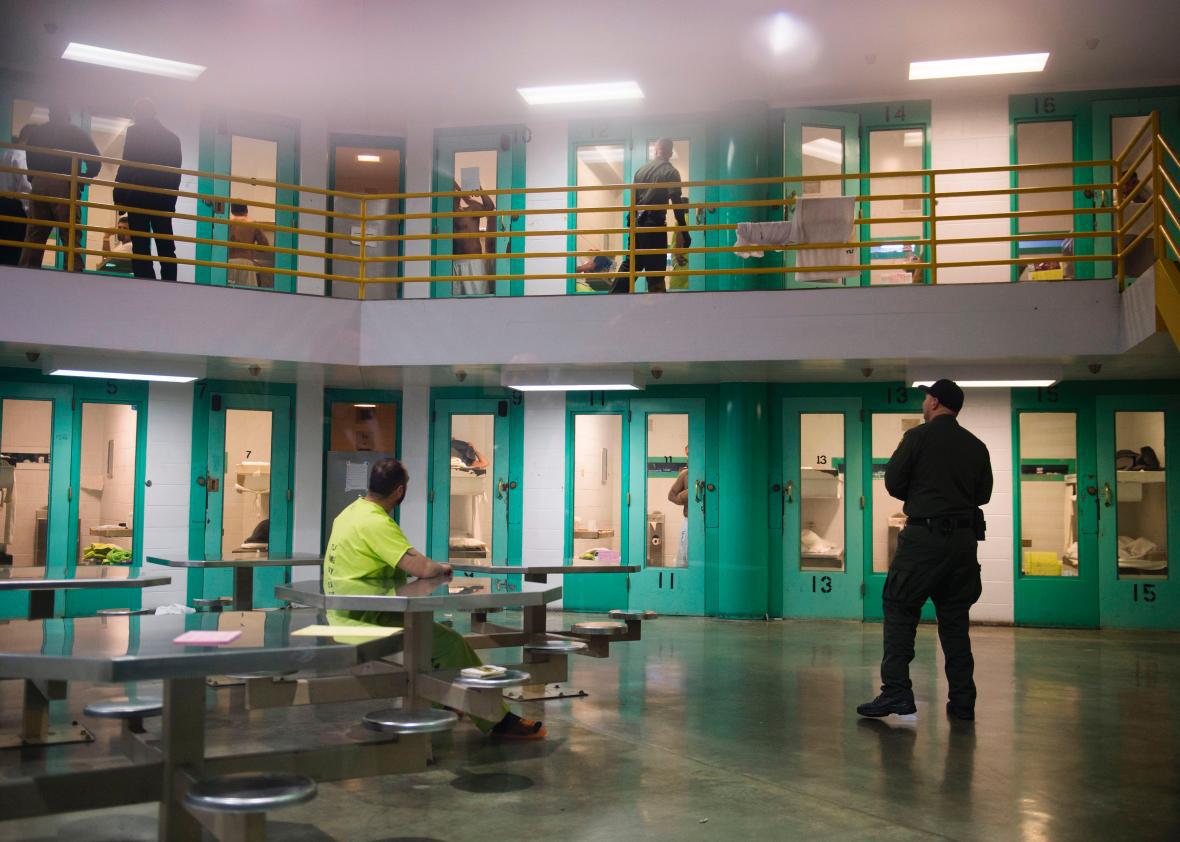The executive order on domestic immigration policy that President Trump signed on January 25 contained a few proposals that seemed awfully ambitious for the executive branch.
One was to cut federal funding from sanctuary jurisdictions. On Tuesday, a district court judge in San Francisco issued an injunction against that section of the order.
Another was the hiring of 10,000 additional immigration officers, a request made “to the extent permitted by law and subject to the availability of appropriations” that would have nearly tripled the number of ICE agents that initiate deportations in the American interior.
That, of course, would have required a big chunk of money from Congress. But the San Francisco Chronicle reported on Friday that the Department of Homeland Security has found a way around that issue, by mandating that Homeland Security Investigations, a 6,200-person unit within ICE that has typically focused on cross-border criminal activity like drug smuggling, sex tourism, and human trafficking, also arrest individuals suspected of violating immigration law.
An ICE spokesperson said that HSI retained discretion over whether to make “collateral” arrests, and said that any change in HSI protocol stemmed from the January order, which eliminated the Obama administration’s concept of “priority” enforcement.
Deportations have traditionally been a very small part of HSI’s work. Though HSI agents outnumber ICE agents tasked with enforcing immigration law, they accounted for only 4 percent of ICE deportations in 2013. Their focus on combatting more serious crimes has earned them the trust of local police departments, a benefit their colleagues at ICE don’t always enjoy. Many local police chiefs say immigration enforcement detracts from police work by discouraging immigrants from calling 911 to report crimes or serve as witnesses.
The relationship between local cops and HSI may be changing under the new protocol. In February, HSI conducted raids in Santa Cruz, California, to combat gang activity, but wound up arresting 10 bystanders suspected of immigration violations. Local politicians were outraged. “We can’t cooperate with a law enforcement agency we cannot trust,” said the city’s police chief, Kevin Vogel.
According to the Chronicle report, ICE-style arrests are now part of HSI’s mission. “If HSI has shifted or expanded its mission … you have effectively doubled immigration enforcement officers in the U.S.” Pratheepan Gulasekaram, a professor at the Santa Clara University School of Law, told the paper. “That is a significant increase without having to seek another congressional appropriation.”
It’s of a piece with the general push at DHS to try to get more agents working on deportations. One reason that sanctuary jurisdictions are a high priority for the Trump administration is that local jails—and in the cases of 287(g) agreements, local police in the field—were a huge contributor to the deportation pipeline during the Bush and Obama years. Between 2011 and 2013, for example, detainer requests from federal authorities to local jails accounted for about 40 percent of all interior removals. The administration has also attempted to loosen border patrol hiring requirements.
*Update, April 29, 2017: This article has been updated to include a response from ICE.
